When we were kids, old friend Pete Dutcher and I prided ourselves on keeping an eye out for old classic cars. We knew that an Olds 442 had a 4-barrel carburetor, a 4-speed transmission, and dual exhaust thus earning it the 442 name. Now reasonably mature adults (according to some), we still find interesting cars available from time to time and send photos of them to one another via text. I have always been in search of a classic Jeep CJ-5, although most of the old Jeeps have long since rotted, while Pete now claims to be principally interested in acquiring a 1971-1973 Buick Riviera, the kind with a boat tail. And although our taste hasn’t necessarily changed much, our age certainly has, meaning that even the cars we first drove decades ago would now be classics themselves, an unmistakable reality that caused me to think back on the many vehicles I have now owned over the years.
While working a job cleaning rental cars one summer as a teenager, I found a 1975 Honda CVCC at a nearby foreign auto repair shop for sale on their lot which I bought for $350. The car was various shades of faded blue. I added parts to the car from another CVCC in the back of a nearby Honda dealership. A mechanic there allowed me to take parts from this car at my leisure. I eventually took the front seats and door panels as well as other miscellaneous parts when needed. My Honda CVCC was a dependable car, although it was a bit difficult to drive equipped with a 5-speed transmission and a clutch that had quite a bit of play. It had an AM radio, a problem I alleviated by attaching an FM converter. I drove it back and forth to the town of Orleans on Cape Cod many times during the year I owned it. Over the summer, I painted the tiny car using a compressor and blue metallic custom paint, spending much of my free time buffing it out over the next few weeks until the Honda looked brand new. But by the end of the summer that year, the brakes started to grind and I foolishly decided to sell the car instead of paying for what, at the time, I thought was an inconvenient and expensive repair. I was satisfied that I had made a profit on the car at the time of the sale, but I almost definitely lost from a practical standpoint. In looking back, that little Honda is still the car that I wish I had held onto, a low maintenance car that most likely would have run for many years.
Instead, I decided that I wanted to drive something that felt more like a muscle car that fall. I had a friend who had ditched his VW Beetle for a black Chevy Nova, and I felt like I was in a similar situation. I found a 1972 Nova in the newspaper’s classified section for $550 in a town not too far away. After buying the car, I threw a spare plate on it and drove it home. The next weekend I picked up a new car stereo and a set of speakers. Although the Nova was everything I had imagined in appearance, the car was not mechanically dependable like the Honda had been. The Chevy had an automatic transmission with a straight six motor which was easy to work on, important later as the car was in need of frequent repairs. If I hit the accelerator too hard it would stick essentially flooring the gas pedal requiring me to throw the car into neutral and shut off the engine while slowly making my way to the side of the road to restart the car. The Nova hardly ran when it was raining. I learned to keep a can of wire dryer in the car with me at all times just in case. Once when the car broke down while out on a double date, Pete Dutcher and I were able to hop out of the vehicle, open the hood and miraculously get the car running again using a combination of wire dryer and carburetor spray. Our dates were less than impressed, more focused on the fact that my car broke down and that they had nearly been stranded rather than amazed by the ability of the two gifted auto mechanics they were out with like we had been hoping.
I moved on from the Nova when a faulty wire in the steering column caused the horn to beep repetitively when turning the wheel to the left and began driving a more powerful 1977 Oldsmobile Cutlass Supreme. But the increasing cost of maintenance concerns regarding the Cutlass caused me to start thinking about more dependable transportation. I responded to a sign that was posted at Bridgewater State College advertising used cars for sale. The flyer led me to Bridgewater Auto Parts, a small remote junkyard specializing in Toyotas. The business was patrolled by a fluffy old female dog, possibly a German Shepherd mix, that had zero protective instinct and was far more interested in calmly greeting anyone who came by. Bridgewater Auto Parts was run by two mechanics, Richie and Bob, who explained to me that Toyotas were often stolen for parts and would usually end up being towed to junkyards like Bridgewater Auto Parts after insurance companies labeled each car a loss. They claimed that Toyota engines were so good that with a few cosmetic repairs most of these vehicles were still drivable, and usually with really low mileage. They said they could essentially restore any Toyota that came in. At the time, they had a 1982 SR-5 Corolla Sport Coupe with a sunroof, 5-speed transmission, and only 47,000 miles parked by their front entrance. This car was dependable and sporty, well worth the financial risk of taking out my first small bank loan for $1,900 to buy it. After driving this car for some time, I eventually sold it to an old friend, Hugh McDonough, from the coastal town of Duxbury who needed a dependable vehicle to drive to the west coast and back.
Inspired, I went back to Bridgewater Auto Parts and asked Richie and Bob to restore another car for me. I picked a similar Corolla, a 1983 bright red model with 58,000 miles on it, black interior, a 5-speed standard transmission with a front end that had recently been damaged in a collision. In what appeared to be a labor of love, Richie and Bob created what was essentially a brand new car during the next few weeks, proudly selling me a completely refurbished Toyota Corolla SR-5 for $2,300. In an ironic twist of fate, this red Corolla was eventually stolen in Boston from the back of Northeastern University. A policeman told me that there was no way that my car had been towed, saying they couldn’t keep cars in that area long enough to make meters worth installing on that side of Northeastern. My car was found a month later, parked in a nearby hospital garage. The hospital notified me of the car’s location, hoping to be paid for what was now about a month of outstanding parking fees. When I went to retrieve the car, it had no wheels or doors, but was in good condition otherwise. But the difficult task of towing it out of the garage or the alternate idea of driving it home without doors in the cold November weather caused me to tell my insurance company to sever my relationship with the vehicle, and also to hopefully pay off the parking garage. I have always suspected that my red Corolla may very well have ended up back at Bridgewater Auto Parts, possibly even sold to someone else after new doors and wheels were added.
Out of necessity that winter, I borrowed a 4-door Chevy Chevette hatchback, a car that had become superfluous when its original owner was no longer able to drive. It was red with an automatic transmission, a great city car that didn’t require a lot of cosmetic attention. The Chevette had a cassette deck. I remember specifically listening to the Beatles For Sale tape, John Lennon’s Milk and Honey album on cassette, and a demo tape of Billy Bragg’s Talking with the Taxman About Poetry while tooling around Boston in that car.
After permanently moving into the city, it would be several years before I would need another car. When I did, Jack Prihoda, the Bell Captain at the Boston Marriott Copley Place and my boss at the time, gave me his old 1983 Toyota Tercel Wagon 4WD. An early version of an SUV, this car could be put into four-wheel drive by pulling up a lever next to the driver’s seat. The car had terribly ugly plaid seats, lacked a window handle on the driver’s side which I fixed by attaching an adjustable wrench, and had a significant amount of rust at the back end of the wagon which, according to Jack, was most likely caused by the number of times he backed into Jamaica Pond while attempting to fish on his way to work in the morning. A dependable car for what I needed at the time, I eventually gave this Toyota wagon to Bridgewater Auto Parts along with some cash in exchange for a white 1987 Toyota Corolla FX-16. This 16 valve, 5-speed car was fun to drive for a while, until it began stalling unpredictably, possibly caused by the oxygen sensor. Excellent on gas, I remember being outraged when it once cost me more than $11.00 to fill the tank. I drove this car for a few years while living in New Hampshire and then on Cape Ann, eventually trading it for a small GMC pickup truck that I found for sale at a gas station in Rockport, Massachusetts. The GMC truck was perfect for moving back into the North End of Boston, but quickly became a luxury I no longer needed being back in the city. I sold the truck during the fall of 1998.
During the night of New Year’s Eve as 1999 turned to 2000 in Boston, my upstairs neighbor’s car tire was flattened. In an effort to help her with the tire repair, I went out to Nissenbaum’s Auto Salvage in Somerville during the next few days. While at Nissenbaum’s, I noticed a silver Toyota in the parking lot. I asked about the car, and was told that it was a 1989 Corolla LE that had literally belonged to an old woman from Lexington who rarely drove it. The car had a 5-speed standard transmission and only 48,000 original miles. I went back a few days later and bought it for $2,900 cash. Incredibly dependable, I drove this Toyota for almost 100,000 miles over the course of the next four years, making almost weekly trips from Boston to Portland, Maine. Occasionally, the oil light would come on, but the car never stopped. Once when I was forced to replace the muffler in a bit of an emergency situation heading back into Boston through the town of Peabody on Route 1, it took a mechanic and I working together to find a solid place under the car to attach a bracket to hold the new muffler in place. In true Toyota fashion, the car was rusting away long before the engine was ready to quit. I still had that silver Corolla sedan when I moved to Somerville during the summer of 2003.
It was at this time that my father offered to sell me his 1998 Mazda B-4000 pickup truck for $5,000 after deciding that a Ford van would be a more suitable work vehicle for him. As I was now making a long daily commute in traffic from Somerville to the South Shore town of Scituate every day, the truck would be a much more comfortable vehicle for me to drive as opposed to the old Corolla. The truck, however, was not nearly as reliable. The Mazda truck broke down constantly and needed ball joint replacements multiple times. Although I loved the Mazda truck, I began searching for a better investment, a vehicle that was more dependable. I was notified by a friend about a 2004 Toyota Tacoma 2-wheel drive, 5-speed pickup truck with only 13,000 miles that she found at a nearby dealership. I traded in the Mazda truck and paid $10,000 using a Discover Card to buy the little Tacoma, a charge that I paid off immediately. Although a great little truck, the bright red Tacoma was by far the worst vehicle I have ever driven in the snow, a primary reason why I decided to trade it for a 2008 Subaru Outback only a few years later. The Subaru was a fantastic car and, as opposed to the Tacoma, the best vehicle I have ever driven in the snow. Eventually, chipmunks living around my house began to nest under the hood destroying the Outback’s firewall causing the car to take on a considerable amount of water during heavy rain. Repaired once, my mechanic told me that chipmunks and squirrels tended to like Subarus, and that it would be a continuous problem unless I was able to get rid of the rodents. With Hurricane Sandy on the way during the fall of 2012, I decided to be proactive. I found two Toyota Tacoma 4-wheel drive trucks that I liked at Copeland Toyota in the nearby city of Brockton. I settled on a 2009 sand-colored access cab base model with 36,000 miles and a 5-speed standard transmission. With Sandy expected to arrive within 36 hours of my visit to Copeland Toyota, I told them that I would make the deal in exchange for my Subaru as long as I could finalize the sale and take the truck the next day, assuming that my car might be taking on water soon after that. I have been driving that Toyota Tacoma for the past thirteen years and it should hit 200,000 miles within the next couple of weeks. Dented and scratched with a torn driver’s seat and a taped steering wheel, I wouldn’t mind if this utilitarian truck turns out to be the last vehicle I ever own.
I still find myself on Facebook Marketplace now and then looking for that old Jeep that I always wanted, the one that I imagined myself driving when I was a kid, although I sometimes have to remind myself that I now have a fairly healthy disdain for driving after doing it for the better part of five decades. Truthfully, if I owned an old CJ-5 I would probably be hard pressed to ever take it out of the garage. But when I do find an occasional old Jeep and bring up the possibility of buying it with my mechanic, he just laughs. “You definitely don’t want one of those old rust buckets,” he says. “Besides, you already drive an antique.”
If you like my articles, please hit the “LIKE” button. It will help to let me know that you are enjoying my writing.
I welcome and invite you to COMMENT.
And please SHARE these posts! This gives added support to my Substack page and also helps to add new readers.
Thanks so much to anyone who is reading Journeys with Jay!


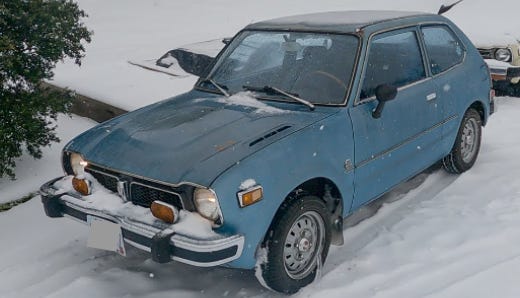
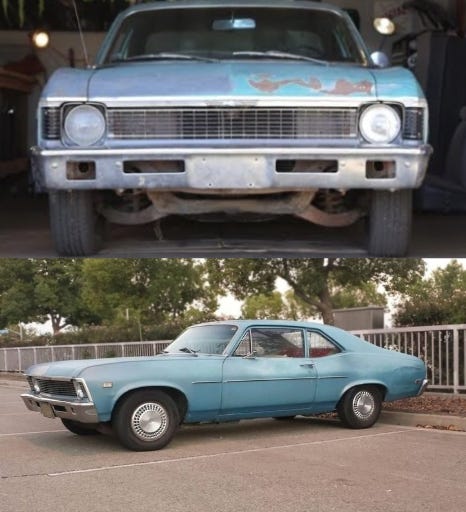

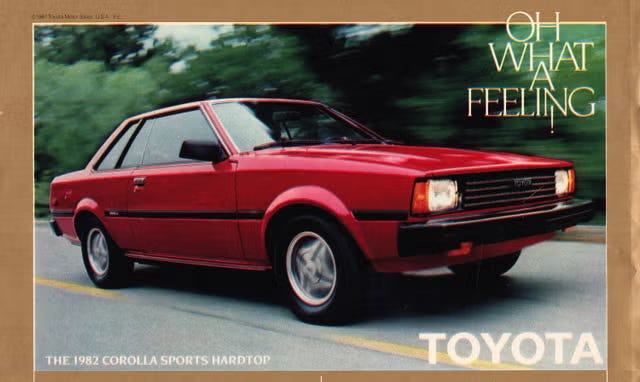
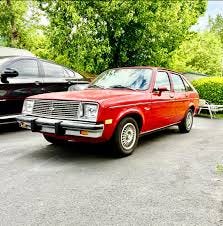

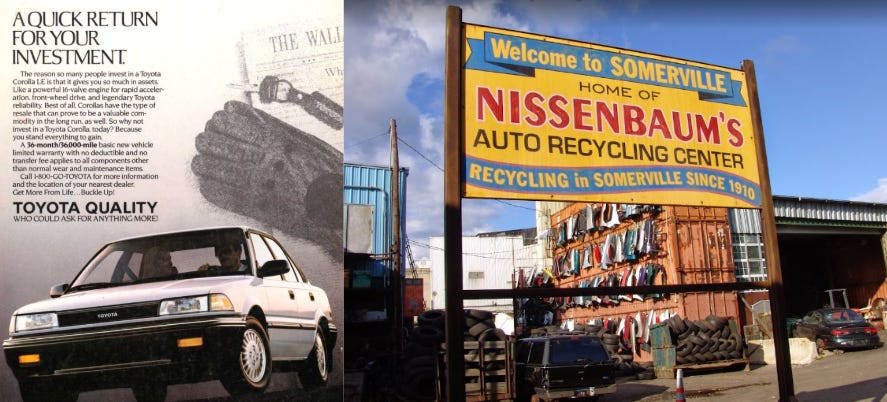
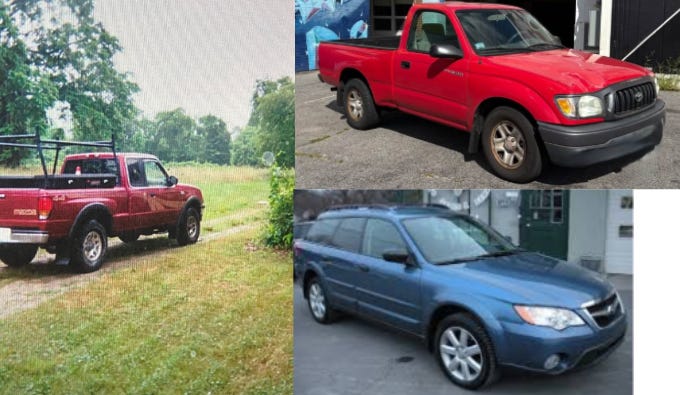
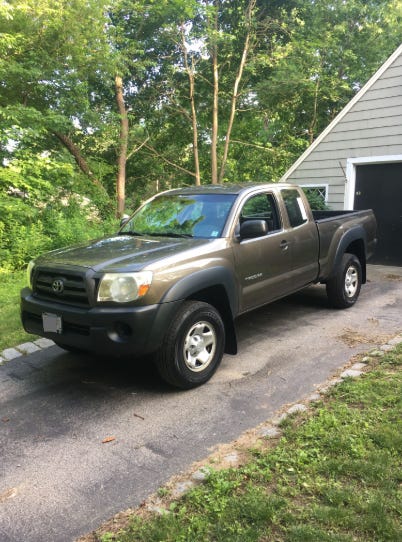
This story reminds me of my 1962 red Chevy impala with white interior that broke down frequently. I bought it at Ernie Boch in Norwood with my Mom accompanying me.😲